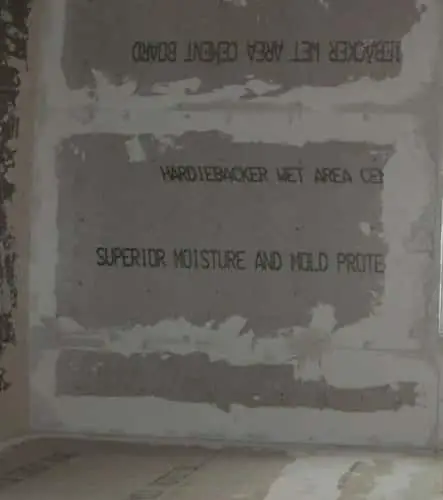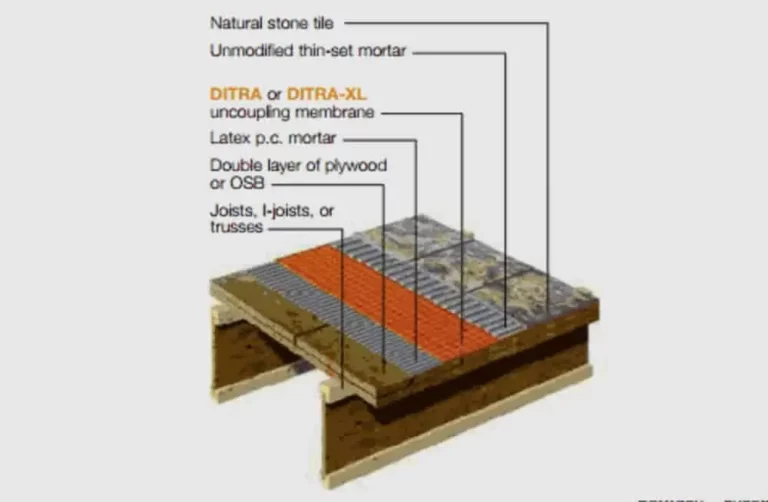Should Cement Board be Glued or Taped?

Cement board is a type of building material which combines cement with reinforcing fibers to create sheets of varying thickness. These sheets are used in both indoor and outdoor construction, especially in areas where moisture is present. Right now, you may be contemplating using it for an upcoming home construction or renovation project and wondering if you need to glue or tape it?
While it is not always necessary to glue cement board, it is recommended. Gluing helps add strength and impact resistance to the board, so the screws do not pop out. Taping cement board, on the other hand, is required – especially on an interior wall in a kitchen or bathroom where moisture is present or an exterior wall whereby temperature change can cause condensation and result in mold growth.
Now that you know gluing and/or taping cement is usually required when using cement board, let us explore this topic further and in more detail below. We will discuss the difference between gluing and taping and how to do each correctly. We will also explain how to properly waterproof cement board, what materials you need for the job, and why it is always a good idea.
So, if you are ready to learn more about sealing cement boardprecisely upon installation, then please read onward…
Does Cement Board Need to be Taped?
Cement board must be taped along the seams or wherever the backer board meets the drywall. Taping helps prevent cement boards from pulling away from each other. In other words, it keeps one board from flexing in a different direction than the others, which can result in an uneven surface.
Taping also helps prepare the walls for tiling by making them stronger and more rigid.As well, if your painting up to the cement board on the drywall, you want to make sure you do not have an open seam running down your wall. That would look terrible!
Should Cement Board be Waterproofed?
Cement board is not waterproof, yet it is used mainly because of its resilience to moisture and excellent drying ability. Nevertheless, a moisture barrier is recommended when using cement board. The best types of waterproofing material include paper-backed aluminum foil, polyethylene plastic sheeting, or a liquid vapor barrier. The choice is up to you and will likely depend upon your budget and skill level.
In fact, installing vapor barrieris code in North America whenever and wherever you are boarding up an exterior wall. Regardless of cement board’s ability to resist moisture, the studs used to secure it are not waterproof. Therefore, it is recommended you take a paintbrush dipped in awood finishing or staining product and go over the studs completely until they achieve a wet sheen.
Can You Use Drywall Mud on Cement Board?
You can use Thinset or masonry mortar on cement board instead of drywall mud. After taping over the seams with a fiberglass mesh tape (FiFlexMesh) or an alkali-resistant tape (FibaTape), simply apply the mortar with a putty knife and then trowel over it to remove any excess product. This will not only make the seams appear less visible, but also work to strength the joints as well.
Can You Use Liquid Nails on Cement Board?
No, you cannot use liquid nails (like Fuze It) on cement board. Liquid Nails is a structural adhesive, not a bonding agent. It comes in a tube just like caulking and is applied in much the same way. Unlike mortar, it is not trowelable and will result in high ridges with unsupported joints that can cause cracking. Liquid nailsis better used for repairing a leaky drain pipe, putting in a stone vanity or tiling a flat surface.
How Do You Seal Cement Board?
The 2 ways to seal cement board is by gluing and/or taping the seams/joints. Gluing helps prevent the screws from popping out by adding strength and impact resistance to the board. Taping is required to prevent the build-up of condensation. This can result in mold growth and cause serious health issues such as respiratory problems and a compromised immune system after prolonged exposure.
The steps to gluing cement board properly include the following:
- Cut the cement board to the proper width and height for installation.
- Using an approved glue, preferably in a tube, apply a line of glue on the studs making sure there are no breaks in the glue line.
- Take a stick and flatten out the glue slightly, if the bead of glue you applied is overly thick.
- Next, install the cement board using screws rated for cement board applications.
- Assuming you applied the beads of glue without any breaks, you will now have a perfect seal on the vertical (or ends of the cement board).
This method, as previously mentioned, will improve the overall strength of the cement board as well as the studs that the board is attached too. The horizontal run on the boards will not be sealed in-between the studsso you must now tape the board to ensure a complete seal.
The steps to taping cement correctly board include the following:
- Taking the mesh tape, run it on the horizontal seams of the boards ensuring the tape is flat. If you find humps in the tape, just pull it back and reapply.
- Take your prepped Thinset and apply it to the mesh tape just as you would with drywall mud on Gyproc.
- Using a trowel or drywall knife, spread out and flatten the Thinset so it covers the mesh tape but does not leave behind any high ridges.
- It is important that the Thinset is not applied too thick as it is quite a bit harder to sand down than drywall mud. Do not create more work for yourself than necessary. Sanding down Thinsetis both time consuming and physically difficult.
- Once dry, check to make sure you have covered the mesh tape entirely and if not, apply more Thinset to ensure a proper seal. A proper seal, in this case, means no air transfers from behind the board to the surface through the seam.
- When dry, take your sanding block and go over the Thinset lightly to smooth out any ridges. This makes applying tile so much easier when you have a flat surface to work with.
- If you have vertical seams and want to be 100% sure you have a perfect seal – even if you did apply glue on the studs – go ahead and tape that area as well.
It is important to note that if you intend on tiling over the cement board, you do not necessarily need to glue or tape the seams. Nor will you need to treat the corners either, as there is no way that seams can split the center or the tile. Another quick side note when installing cement board – use cement board screws whenever possible. If you choose nails instead, then use the galvanized or hot-dipped ones.
Conclusion
To conclude, sealing cement board joints by gluing and/or taping is necessary if you want to prevent condensation from building up on interior (and exterior walls). This causes them to warp or rot as well as promotes the growth of mold and mildew. Gluing and/or taping cement board seamsalso helps to add strength and add impact resistance to the material which helps prevent screws from popping.
And remember to make sure your taping job does not leave behind high ridges. You will thank me for that tip later when it comes time to install the tile. It just makesthe work so much easier to do – and looks better too – when you have as flat of a surface as possible.
Hopefully, this article has been of help to you. Thanks for reading and good luck with your future home construction and/or renovation projects.




